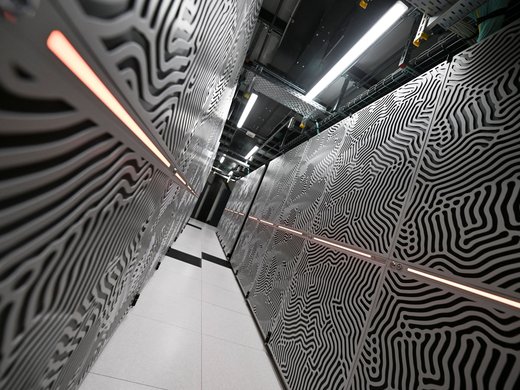For the last year, fights over 5G have made headlines, especially Chinese firm Huawei’s bid to develop 5G networks in Europe and North America. The subject is an important one that deserves debate. The amount of attention dedicated to the Huawei saga, however, implies fights over infrastructure are fights over the future. In fact, physical infrastructure already underpins the internet — and states and companies are already competing over it. This pattern goes back at least 100 years: battles over information have long been battles over infrastructure too.
The internet may seem wireless, but fibre-optic cables carry 95 to 99 percent of international data. Those cables aren’t necessarily developed by states alone. Google partly owns 8.5 percent of all submarine cables; Facebook and Google are both planning cables to Africa. Google’s line, which will run from Portugal to South Africa, is to be called Equiano, in memory of Olaudah Equiano, a Nigerian former slave who campaigned for the abolition of slavery in the eighteenth century.
Infrastructure provision, when paired with popular, public-facing search or social network services, is simply another form of concentration in the communications market.
The motive for the cable isn’t difficult to guess — only around a quarter of the people living in Africa have internet access, and by supplying the cables, these companies hope to lower the cost of providing internet service and massively increase the market for their products. Infrastructure provision, when paired with popular, public-facing search or social network services, is simply another form of concentration in the communications market.
States are also well aware of the power of cables. Russia and China are both surveilling fibre-optic submarine cables. This topic receives surprisingly little attention in both the press and scholarly communities. Maybe submarine cables are too far removed from our everyday experiences with wireless smartphones, but these cables make international communication possible — we ignore them at our peril.
For states such as China, infrastructure is inseparable from information. Since 2013, China has made deals with more than 60 countries to support the enormous infrastructure spending for its Belt and Road Initiative (BRI). In April 2019, 37 foreign leaders and more than 5,000 representatives from 100 states attended the second summit about the initiative in Beijing. Ahead of the summit, the Chinese government’s top diplomat, Wang Yi, stated that the partnerships with various countries were “not a geopolitical tool, but a platform for cooperation.
Less covered than the BRI’s trade infrastructure (such as physical roads or ports) is the associated communication infrastructure. In April, the People’s Daily — the official newspaper of the Chinese Communist Party — announced the launch of the Belt and Road News Network. The network will be a new cog in the influential machine that is Chinese communication efforts: the Chinese government and Chinese companies have built substantial international information networks through the news agency Xinhua, an English-language satellite TV news channel (China Global Television Network) and apps such as the social media video app TikTok (the most downloaded app in the United States recently). Chinese media influence has a far reach, as one project, named Chinfluence, is investigating in Eastern Europe. It has shown that Chinese ownership of Czech media led to much more positive coverage of China. The BRI is not just an initiative about a new Silk Road of sorts; it is about the twenty-first-century information superhighway (to revive a long-discarded term).
In China, infrastructure and information are inextricably intertwined. As a result, states will, unsurprisingly, invest in their own infrastructure to bypass existing structures that seem to box them in. Here, Germany offers an instructive parallel, (as I explore in my new book, News from Germany).
When submarine cables first emerged in the 1850s and 1860s, they were laid by a small number of Anglo-American companies. In 1875, the International Telegraph Union created a dual regulatory system for cables. The system differentiated between privately owned submarine cables and landline cables, which were government-owned in Europe (although not in North America). The agreement meant that submarine cable companies could charge whatever they liked.
The global battle over information in the late 1930s and early 1940s was all the fiercer because it built on decades of world competition over communications infrastructure.
For several decades, states paid little attention to this system, just as we pay little attention to fibre-optic cables today. They saw the system as a neutral conveyer of information. That changed in the 1890s. States such as Germany and the United States saw themselves increasingly as imperial and global powers. Cables became part of the growing geopolitical competition. Many states worried that cables were not neutral conduits of content. They feared that states might subject cables to surveillance, that they might censor content and that they might cut cables if a war broke out.
Germans believed that cable companies were not just private enterprises but organizations influenced by the British government, in particular. This was not wholly correct, but neither was it completely wrong. One of Britain’s first actions during World War I was to cut submarine cables connecting Germany to the world. Germans were convinced that the British were using cables to spread anti-German propaganda around the globe. German submarines devoted much of their time to cutting British cables in retaliation throughout the war. Cables, in this case, were as much a part of the war as other weapons. As a result, Germany invested in wireless technology (the forerunner of radio) to bypass cables altogether. In the long run, German expertise and success in wireless technology laid the groundwork for the Nazis to create powerful radio towers that would spread racist, anti-Semitic and homophobic propaganda around the world. The global battle over information in the late 1930s and early 1940s was all the fiercer because it built on decades of world competition over communications infrastructure.
Competition over information is enabled by infrastructure — century-old submarine cables or modern fibre-optic cables. History reminds us — or, at least, it should remind us — not to be naive about the role of communications infrastructure in geopolitical and economic competition.




